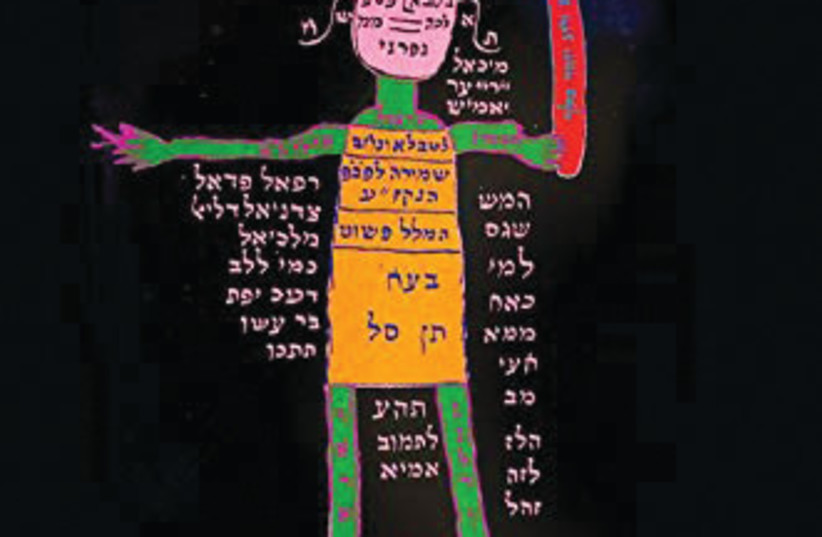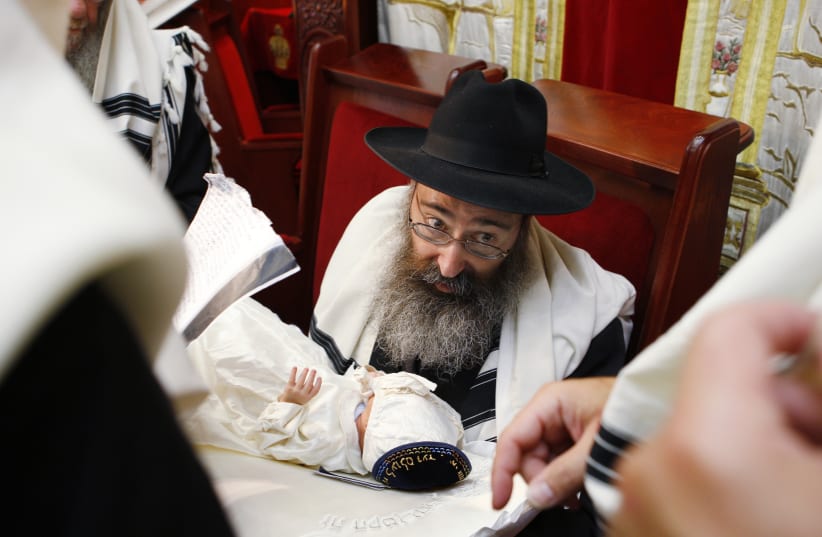This is a most unusual volume. Robert Jütte, who describes himself as a “medical historian,” has chosen to research in-depth the relationship between the human body and Jews, Jewish practice and Judaism. The result is a work of impressive scholarship drawn from a wide range of academic and religious sources.
In The Jewish Body, Jütte is original not only in his choice of subject but in the way he has chosen to explore it. Firmly basing his examination on Jewish belief, practice and experience, he puts the human body in most of its aspects under the microscope, with some surprising results.
He begins by considering the body in biological terms, the Jewish belief that human beings are made in the image of God, and the divergence between Christian and Jewish concepts of sexuality and spirituality. He proceeds to explore the negative stereotypes of the Jewish body promulgated over the centuries. He devotes no less than eight pages to the issue of the Jewish nose (mentioning Barbra Streisand’s decision to stick with hers), and writes at length also about other physical aspects of Jews widely disseminated for two thousand years or more: thick lips, dark skin, hair color and weedy physique.
In one fascinating chapter, Jütte traces the efforts of progressive Jewish leaders in the 19th century to encourage physical fitness among Jewish youth. He mentions the Jewish Lads Brigade, founded in Britain in 1895, predating the Boy Scout movement by 12 years. He talks also of the strong tradition of Jewish prizefighters in the UK going back to Daniel Mendoza in the late 18th century to the story of Harry Haft, who survived Auschwitz solely on account of his boxing prowess.
In a chapter devoted to sex-related issues, Jütte examines the history and the diversity of Jewish attitudes toward contraception, homosexuality, prostitution, same-sex marriages, and the recommended time, place and frequency of sexual intercourse.
He proceeds to a highly researched section dealing with the emphasis that Judaism places on physical health. “Almost no other religion pays so much attention to physical health as Judaism,” he writes, backing his assertion with a quote from The Book of Sirach/Ecclesiasticus: “Health and fitness are better than any gold.” He dwells at length on the mikvah, circumcision, ritual washing of the hands, Jewish sexual ethics and dietary laws. In particular, he quotes the eminent 12th-century Jewish scholar and physician Moses Maimonides: “Maintaining a healthy and sound body is among the ways of God.”
Jütte’s final chapters are devoted to how Judaism regards and reacts to the sick body, the body in pain, and the body in death. In reviewing how different national and ethnic groups regard pain and deal with it, he refers to research showing that Jews react to pain more acutely than other groups because they have no “anxiety-relieving devices.” Illness and pain seem to reinforce inbuilt apprehension. When in pain, the research discovered, Jews think not only about themselves but view everything in the context of the family. Despite these findings, Jütte is able to refer to the well-established stereotype of the “self-pitying Jew who does not bear illness patiently, as the Bible and Midrash command.”
In dealing with the closing stages of life, Jütte tackles Jewish practice when a person is deemed close to death – encouraging confession of sin, providing physical and spiritual comfort, and much else. Judaism’s guidelines for end-of-life care are comprehensive, and Jütte touches also on the relationship between observing the commandment against killing – for active euthanasia is strictly forbidden – and what he terms “passive euthanasia,” which is not extending a dying person’s life if it will cause additional pain and suffering. That is permitted.
Jütte deals at some length with current Orthodox Jewish practice regarding actual death – brain death is not acceptable from a halachic point of view. A body that has a pulse and is kept breathing, even though artificially, cannot be considered halachically dead. The rules regarding impurity when touching a dead body do not apply. “Among Orthodox Jews,” he writes, “the traditional concept of respiratory arrest, with its connection to the image of the human soul, still prevails.”
Finally, Jütte covers aspects of death such as resurrection and the transmigration of souls, and the differing perceptions of these matters by the various Jewish sects, and concludes with the practices and ceremonials attached to burying the dead.
The overriding impression left on the reader is wonder over the novel aspects of Judaism Jütte has managed to reveal, matched with astonishment at the breadth and depth of his scholarship and of the vast range of source material he has uncovered. Appended to the text are no less than 26 pages of references, a bibliography running to 36 pages, and a comprehensive index.
Originally published in German in 2016, the English translation by Elizabeth Bredeck is both eminently readable and carefully considered. Where necessary she includes a book title or reference in its original language to help the assiduous reader quickly locate it.
The Jewish Body focuses on the most fundamental aspect of life on earth – the human body – in relation to the Jewish religion and practice, an angle of Judaism perhaps too little considered in the past. Jütte’s work is highly original in concept and encyclopedic in scope. It will instruct, amuse and entertain in equal measure.


The Jewish Body: a HistoryBy Robert JütteUniversity of Pennsylvania Press416 pages; $48.54
